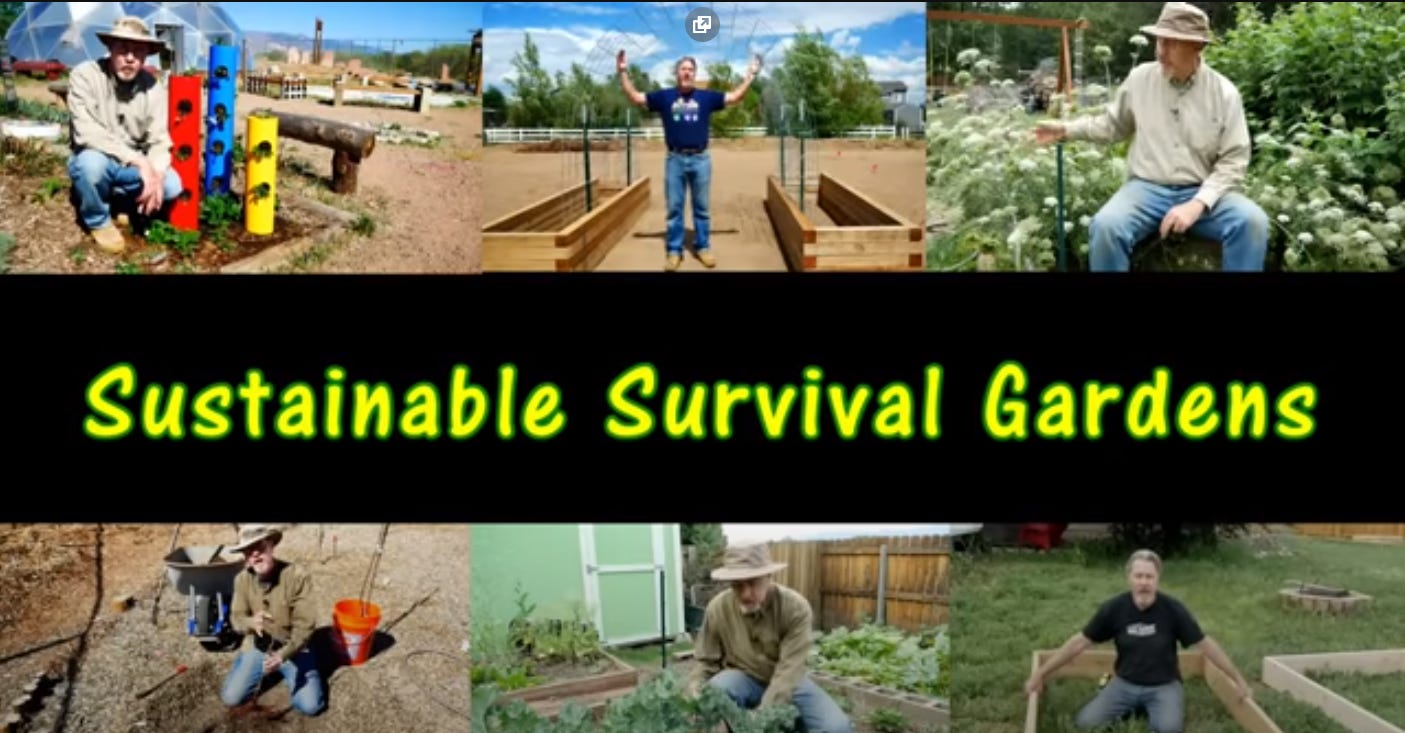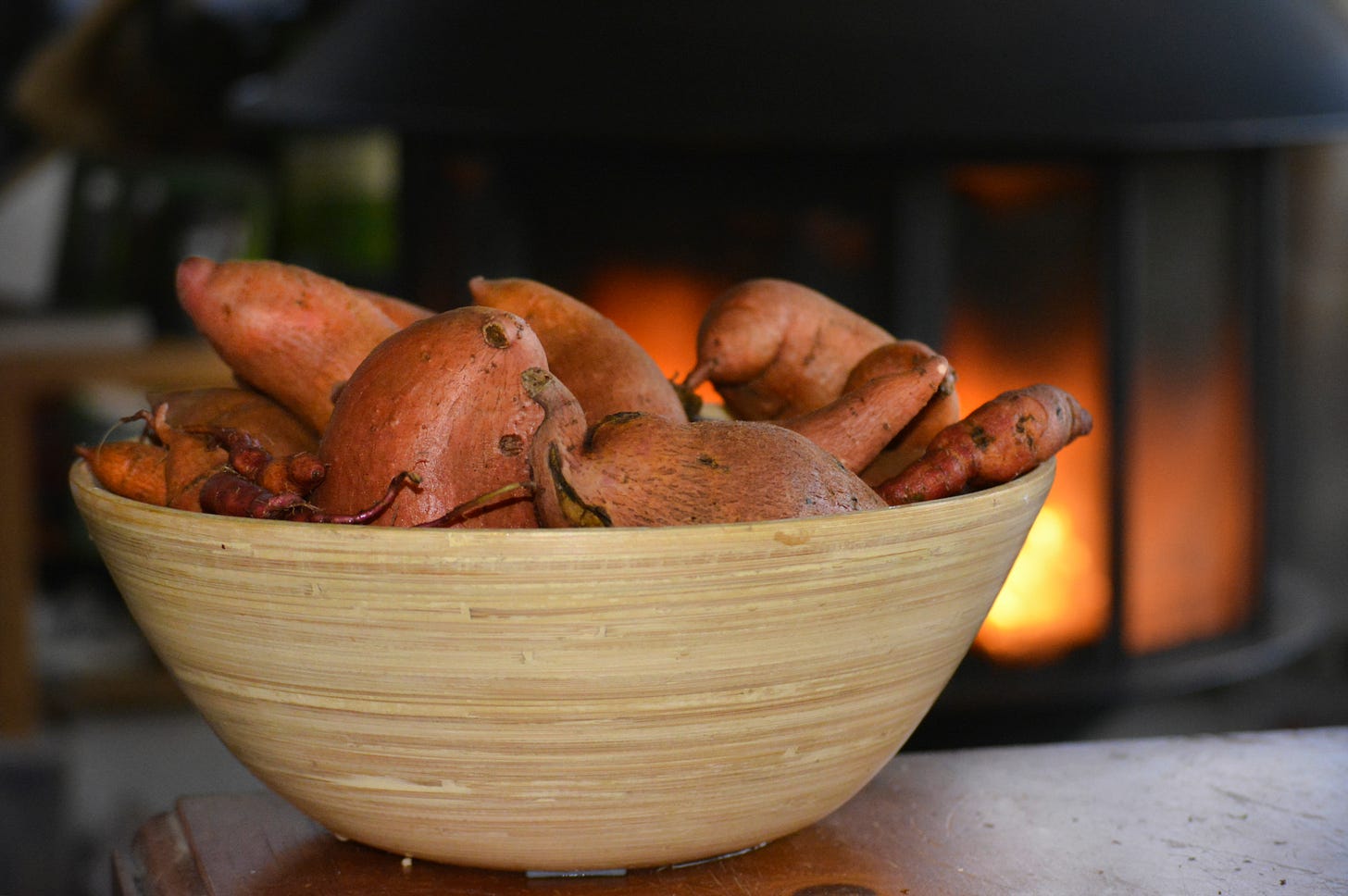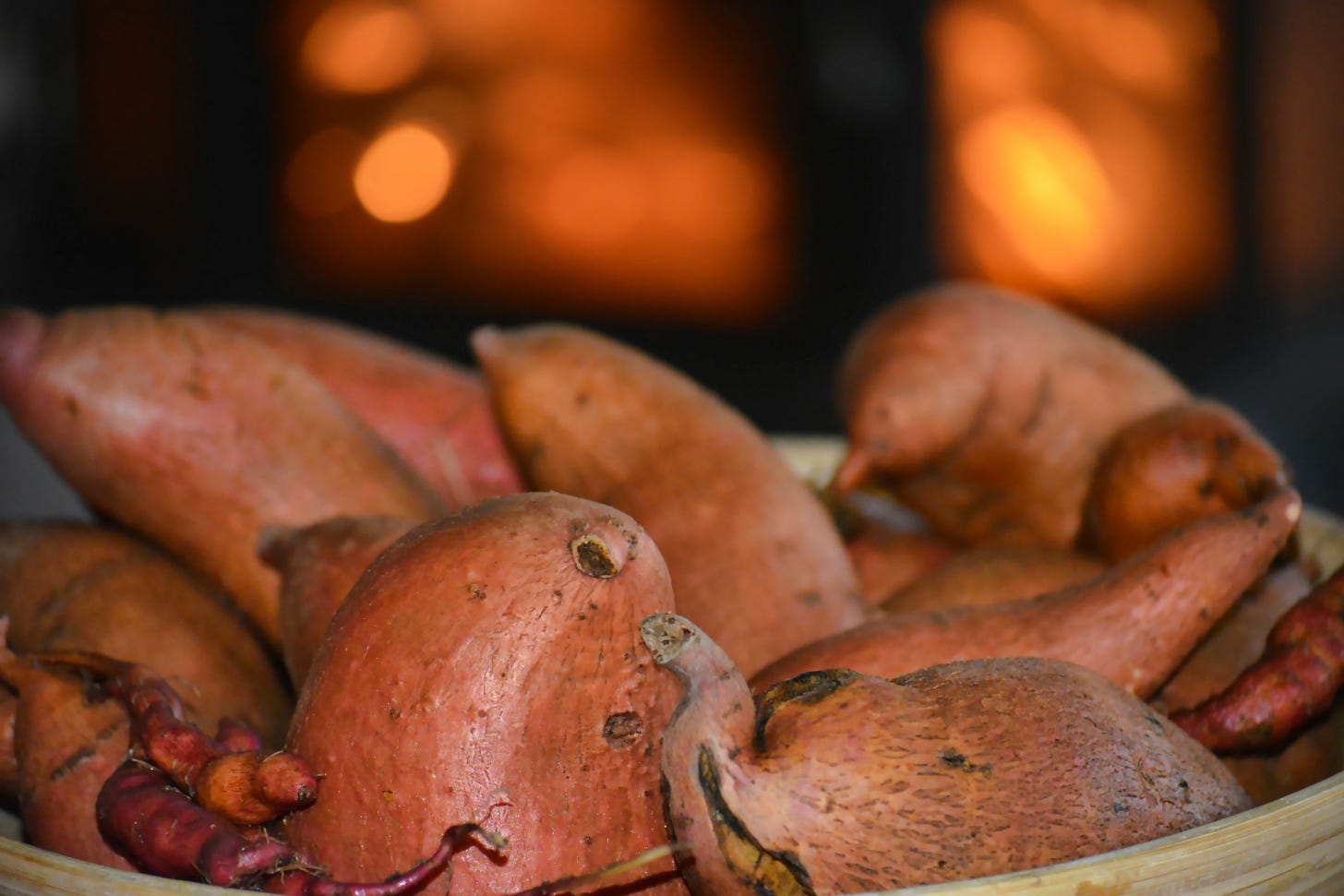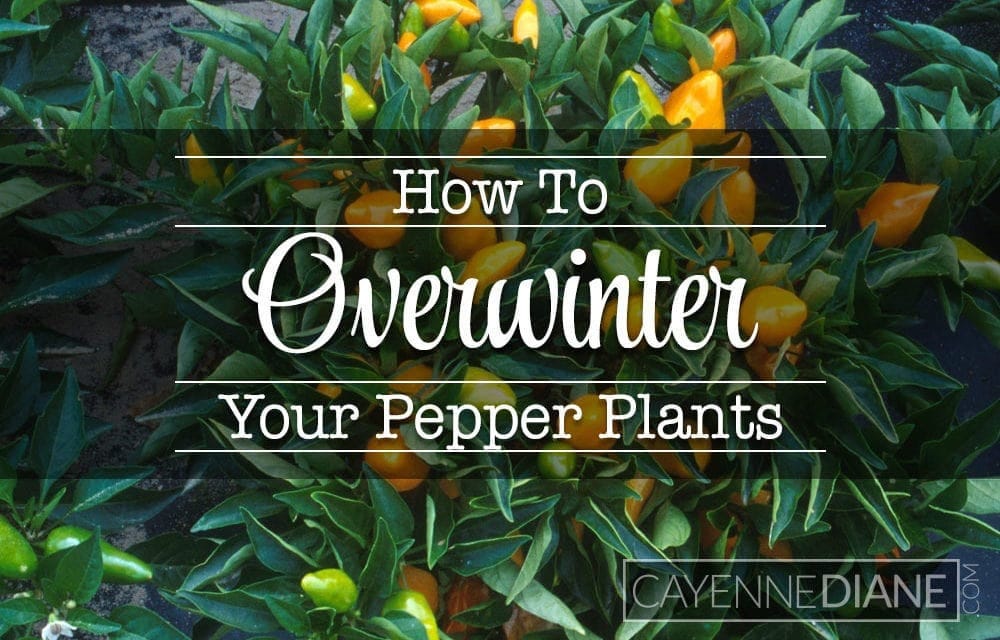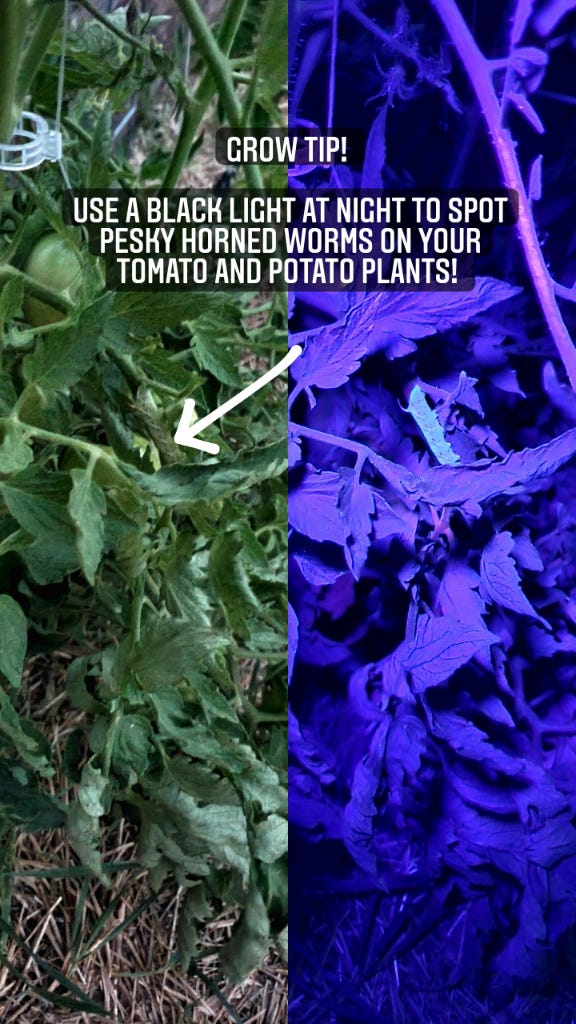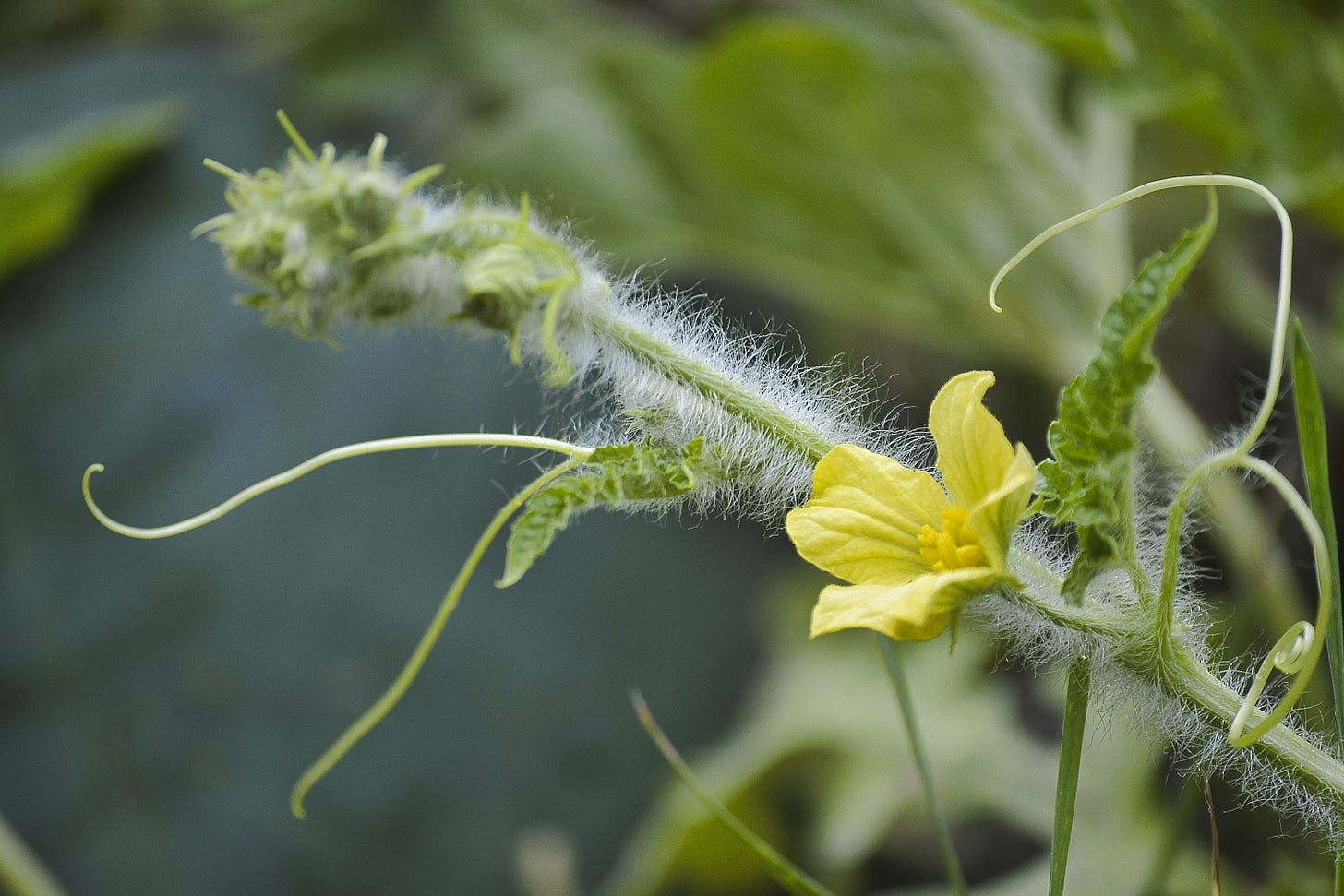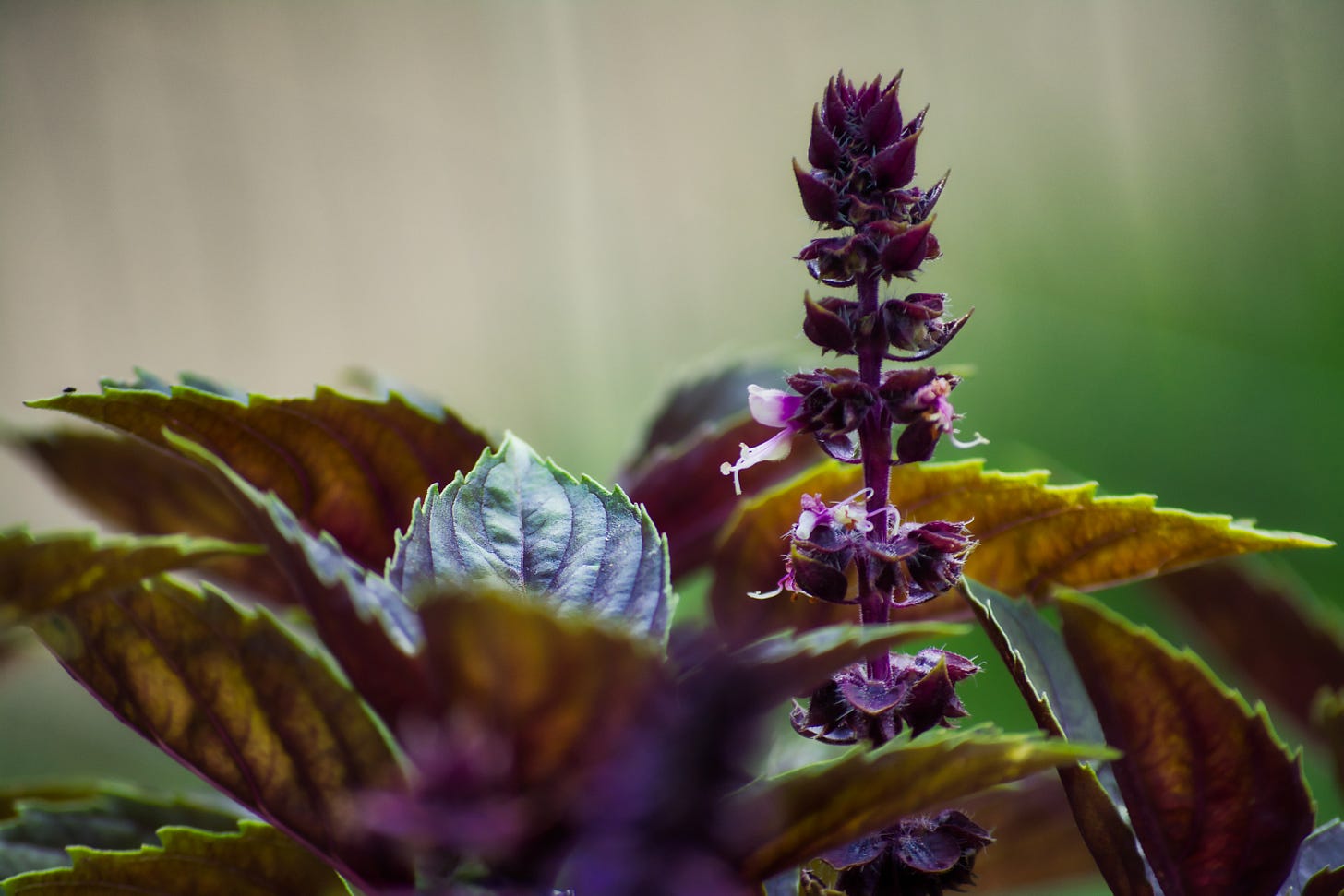From the Garden
As food is one of our highest priorities, this section should not only educate but inspire us to become more than grocery-store patrons. Here we can share our successes and stumbles as we become our own suppliers of nutritious food.
Stepping Outside Control
So, here is a simple, yet powerful way to step out of a designed control ("convenience") mechanism, and take charge of you.
It is time to set aside the belief that our food sellers and growers place true nutrition ahead of profit. They don't.
The following link of photographs from my 2nd year garden, show it is possible to be our own food producers. I have never gardened before in my life. While it is work, this summer, we have cut our grocery bill by 3/4s, and we are preserving a 1/4 to 1/3rd of our food for lean times.
In one small step, you, like me, can and should be producing your own food.
#food #nutrition #work #like #lean #garden #gardening #grocery #selfsufficiency #prepper #freedom
SURVIVAL GARDEN LINK:
(Click on the orange link or the Sustainable Survival Gardens image below.)
Survival Garden Series
by: Gardener Scott
Sweet Potatoes From our Garden
(Pictures Below)
Health Benefits of Sweet Potatoes
Highly Nutritious. Sweet potatoes are a great source of fiber, vitamins, and minerals.
Promote Gut Health.
May Have Cancer-Fighting Properties.
Support Healthy Vision.
May Enhance Brain Function.
May Support Your Immune System.
Sweet potato skins are very nutritious.
Packed with nutrientsCalories: 130.
Carbs: 30 grams.
Protein: 3 grams.
Fiber: 5 grams.
Provitamin A: 154% of the Daily Value (DV)
Vitamin C: 31% of the DV.
Potassium: 15% of the DV.
TIPS FOR KEEPING YOUR PEPPER PLANTS ALIVE OVER THE WINTER
If you don’t want to hassle with seed-starting in the spring, or if you have a particular pepper plant you love, try overwintering it and you’ll have more peppers earlier in the season. With a little pepper winter care indoors, you can keep your pepper plants alive through the winter frost. If your peppers are in the garden, vs in containers, you will have to dig them up, plant them in a container and bring them indoors. If you plan on overwintering pepper plants, realize that this will keep the plant alive, but it will not produce fruit. To produce fruit, peppers need higher temperatures and greater amounts of light than the average US homes can provide in the winter. Overwintering peppers isn’t overly complicated, but below are a few tips to make the process successful.
Note: if you live in a warmer climate that does not have frost and doesn’t get too cold, your plants should be fine outside over the winter. I’m in Southern California and I leave my container grown plants outdoors all winter. I simply water them every now and then, and they are ready to pick up right where they left off once Spring rolls around.
For places that do encounter frost, here are the steps to keep those plants alive.
STEP #1: BRING YOUR PEPPER PLANT INSIDE
The first step to overwintering your pepper plants is to bring them indoors before first frost. Before you do so, thoroughly spray down the entire plant, including the roots. This will help remove any pests that may be hiding on the leaves or roots. Remove all pepper fruits, mature or immature, from the plant.
If you are transplanting a pepper plant from the garden to a container, dig up as many roots as possible. This will help your plants soak up nutrients and moisture from the soil come spring, when are replanted into the garden and attempting to regain their strength. USE POTTING SOIL when transplanting. Tempting as it might be to use your garden soil to pot up your overwintering peppers, don’t do it. Garden soil is full of pests, and once the soil warms up inside, those pests will be all over your house. Instead, use fresh potting soil when moving your plants into pots.
STEP #2: LOCATION, LOCATION, LOCATION
There are two places you can put your overwintering peppers once you bring them inside. The first option is a cool, dark basement area that receives minimal light. This setting will force the plants into dormancy, meaning alive but not actively growing. They might look dead, but they are not. During this period of dormancy, you’ll want to make sure the soil doesn’t get too wet or too dry. Give the soil a nice spritzing every once and awhile so it stays lightly moist.
The second place you can put your pepper plants is in a sunny window or under grow lights. In this case, they may not become dormant, but they most likely will not produce fruits until Spring. Give them a bit more watering than the fully dormant plants located in a dark basement.
STEP #3: CUT BACK ON WATERING
Once you have placed the pepper plant in this location, cut back the watering. When you are keeping peppers over the winter, you will find that they need far less water than in the summer. You should only need to water the plant once every three to four weeks. Do not let the soil stay soaked, but also do not let it dry out completely.
Shortly after you place the pepper in a cool location and cut back watering, you will notice the leaves starting to die back. Don’t panic, this is normal. The pepper plant is entering dormancy.
STEP #4: PRUNE YOUR PEPPER PLANTS
Once the leaves start to die, you can prune back the pepper plant, meaning trimming the plant to remove any injured or dead branches. Prune the branches of the plant to a few main Y’s on the plant, leaving about 1 to 2 in. for the upper part of the Y. This step will remove the dying leaves and make the plant less susceptible to pests. The pepper plant will grow new branches in the spring.
STEP #5: PREPARE FOR SPRING
To finish your pepper winter care, about a month before your last frost date, bring your pepper plant out of the cool location and move it to a brighter, warmer location. You may even want to use a heating pad under the pot to add additional heat. Resume watering, but make sure not to over water the pepper plant. In a week or so, you should see some new growth appear.
I’ll be honest, even if you follow all of the steps for how to keep peppers alive over winter, you may find that your pepper plant does not survive. 😭
When overwintering pepper plants, some varieties do perform better than others. For example, I had a great habanero plant that would not quit, it actually produced fruit all winter. And my Brazilian Starfish plant just insisted on growing like crazy even though I left it outside over the winter and gave it very little water. I’d bet that the superhot varieties might be more difficult to overwinter. When overwintering goes in your favor, you can enjoy your favorite peppers earlier in the season with a bit less work.
Say Hello to our Not-So-Little Friend
ALSO, UPDATES FROM OUR GARDEN (Ups & Downs)
More Coming Soon: Our First Garden - What We Learned
SWEET POTATOES: Well, we learned that Red Wiggler “garden” worms, aka, “Night Crawlers” love eating sweet potatoes right in the garden. Bad for our table, good for going fishing. Our sweet potato plants looked great and we thought all was well. Unfortunately, when we began our harvest, we noticed that many, if not most had been eaten. We determined it was our earthworms as we found them inside and outside the potatoes, eating away. We harvested only about 1/4 of the amount we should have.
POTATOES & TOMATOES: Black Lights work great to help find the well camouflaged “Horn Worm”.
We had a great “looking” garden, but a lot less production than we hoped for. Our potatoes and tomatoes were attacked and in the case of our potatoes, were nearly decimated. One morning all appeared well but by early afternoon, leaves were gone, which lead to having very few potatoes. Finding “Horn-worms” was very hard. They are masters of camouflage. Though we found that it was easier to find them, not by look for them by color, that it was simpler to find them as adults by their size compared to the plant’s stems. Shortly there after, we found that when we used a black light, they were easy to find at night. (see photo below)
Squash: Oh Boy - Squash and Zucchini! We were excited as this crop was to be extremely productive all summer. Early on, we harvested both and they were yummy. Then, a sad reality set in. Though our plants looked awesome, no vegetables were growing. After doing a fair amount of research, it became apparent that our woes were because of a lack of pollinators, which we confirmed with our own eyes. Earlier in the season, we had Benson spray for mosquitos for one month. Though we don’t know if that was the entire problem, it probably did not help.
Tomatoes - We prepped our garden, put up “cattle panels” to help our plants grow better and taller and tomatoes began to grow. While we did pick a fair amount of fruit, we were not in the game. We should have been able to harvest 10 lbs or more per plant. Our first known problem was the hornworm again. Ah, with our new tool, the black light, we, with persistence, were able to fend them off. Whoo Hoo! Well, then we noticed that the fruit was being eaten and not the leaves. Again, after some research, we found another voracious eater, the Tomato Fruit Worm. They would eat whole tomatoes over night. Holy Crap! We tried a couple of different ideas but to no avail. So, we decided to carefully spray with a pesticide, Seven. Since we had no pollinators anyway, we took a chance. It Worked. Our tomato production went from zero back to where it was. The other thing we learned is that we possibly should have fertilized more often throughout the season.
Watermelon - Unfortunately, we got behind on planting our watermelon, and actually most of our garden due to Cheryl’s passing. Long story short, we harvested four melons, mostly medium size or a bit larger. They were tasty. We will try again next year, I hope.
Oh, we also learned a nifty old trick in determining if a watermelon is ripe. It worked for us. Pretty Amazing.
Basil - Our basil ROCKED! We planted two types, a normal green basil and a purple variety. They were the stars of our garden. We love basil and they helped keep other nasty bugs away from our tomatoes. We will keep growing our champion of our garden.
Beets, Peppers & More
As for our beets and peppers, they are growing and looking good. We picked a couple of bell-peppers and they tasted great, though a bit small. We will let you know how they turn out.




